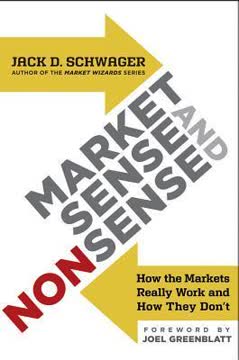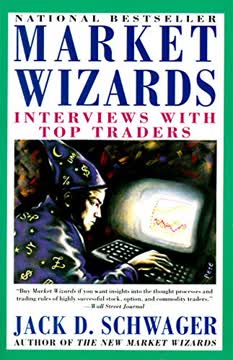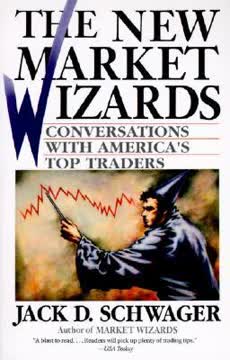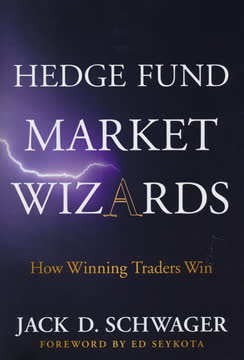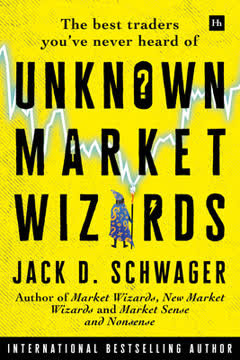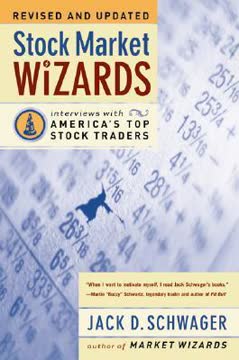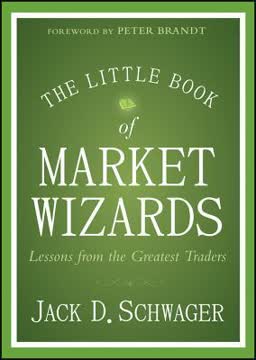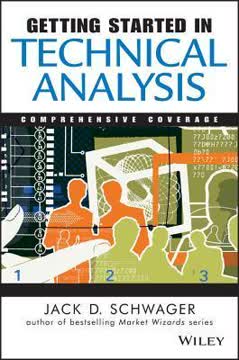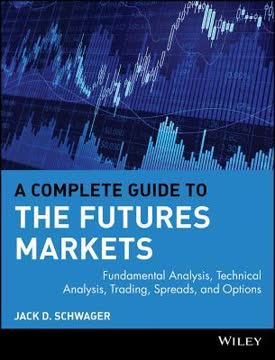Key Takeaways
1. Expert Advice Often Falls Short
"The amazing thing about expert advice is how consistently it fails to do better than a coin toss. In fact, even that assessment is overly generous, as the preponderance of empirical evidence suggests that the experts do worse than random."
Beware of Financial Experts. The book provides extensive evidence demonstrating that financial experts, including TV personalities, financial newsletter writers, and market commentators, consistently underperform market indexes. Their recommendations often lead investors astray, creating more harm than good.
Empirical Evidence Reveals Weakness:
- Jim Cramer's Mad Money recommendations showed negative long-term performance
- Financial newsletter track records significantly lagged market indexes
- Expert market predictions were often spectacularly wrong
Alternative Strategies. Instead of relying on expert advice, investors should consider index funds or develop their own investment methodologies. The key is independent thinking and a systematic approach to investment decisions.
2. Markets Are Not Perfectly Efficient
"Markets do not accurately discount all known fundamentals, but rather they overdiscount or underdiscount this information, depending on the market's emotional environment."
Emotional Markets. The efficient market hypothesis assumes rational pricing, but the book argues that human emotions significantly distort market valuations. Prices are determined by a combination of fundamentals and psychological factors.
Market Irrationality Examples:
- Dot-com bubble where companies with no profits were valued at hundreds of millions
- Housing market collapse driven by irrational lending practices
- Subprime mortgage securities incorrectly rated as low-risk investments
Opportunity in Inefficiency. Market inefficiencies create opportunities for skilled investors who can identify and exploit pricing discrepancies caused by emotional overreactions.
3. Past Performance Does Not Guarantee Future Results
"Investors are truly their own worst enemy. The natural instincts of most investors lead them to do exactly the wrong thing with uncanny persistence."
Performance Trap. Investors frequently make the mistake of selecting investments based on recent high returns, which often leads to poor future performance. Past success does not predict future outcomes.
Key Investment Insights:
- Sectors and strategies with highest recent returns tend to underperform
- Long-term investments initiated after low-return periods typically perform better
- Hedge fund strategies show significant performance variability
Strategic Approach. Investors should focus on understanding underlying fundamentals, strategy effectiveness, and potential future market conditions rather than chasing past performance.
4. Risk Is More Complex Than Volatility
"Risk is a function of both the underlying portfolio and leverage. Leverage alone tells you nothing about the portfolio risk."
Beyond Simple Measurements. Traditional risk measurements like standard deviation are insufficient. True risk assessment requires understanding hidden risks, potential event scenarios, and comprehensive portfolio dynamics.
Risk Complexity Factors:
- Liquidity risks
- Market correlation
- Leverage implications
- Strategy-specific vulnerabilities
- Potential extreme events
Comprehensive Risk Assessment. Investors must look beyond surface-level metrics and develop a nuanced understanding of potential portfolio risks.
5. Diversification Requires Strategic Approach
"Diversification may be the only free lunch on Wall Street, but it is served at a diner accessible only to hedge fund investors."
Smart Diversification. Simply adding more investments does not guarantee reduced risk. Effective diversification requires understanding correlations, strategy differences, and portfolio construction principles.
Diversification Strategies:
- Focus on low-correlation investments
- Understand underlying strategy risks
- Rebalance periodically
- Monitor portfolio dynamics
- Avoid over-concentration
Portfolio Optimization. Successful diversification involves continuous monitoring and strategic allocation across different investment strategies.
6. Hedge Funds Offer Unique Investment Opportunities
"Hedge funds encompass a heterogeneous range of investments, which allows for a much greater degree of diversification than is achievable within the traditional investment world."
Alternative Investment Landscape. Hedge funds provide diverse strategies that can enhance portfolio performance and reduce overall risk when properly selected and managed.
Hedge Fund Advantages:
- Multiple uncorrelated strategies
- Potential for consistent returns
- Lower correlation with traditional markets
- Professional management approach
Investment Considerations. Investors should carefully evaluate hedge fund strategies, fees, track records, and potential hidden risks.
7. Leverage Is a Tool, Not a Risk Measure
"Leverage is a tool that can aid more efficient investing. It allows for creating hedged portfolios with higher return/risk ratios."
Leverage Misconceptions. Many investors misunderstand leverage, viewing it as inherently risky. In reality, leverage can be a strategic tool for managing portfolio risk and return.
Leverage Principles:
- Risk depends on underlying investments
- Can reduce portfolio volatility
- Requires sophisticated understanding
- Not universally applicable
Strategic Application. Leverage should be used thoughtfully, considering specific investment characteristics and overall portfolio objectives.
8. Portfolio Construction Requires Critical Thinking
"Portfolio optimization provides a mathematically precise answer to the wrong question."
Beyond Mathematical Models. Traditional portfolio optimization techniques often fail because they rely on past data that may not represent future market conditions.
Construction Considerations:
- Question underlying assumptions
- Consider multiple scenario analyses
- Understand strategy correlations
- Maintain flexibility
- Continuously reevaluate
Holistic Approach. Successful portfolio construction demands more than mathematical precision; it requires nuanced understanding and adaptive strategies.
9. Investor Psychology Drives Market Behaviors
"Markets do not accurately discount all known fundamentals, but rather they overdiscount or underdiscount this information, depending on the market's emotional environment."
Emotional Investing. Human psychology plays a crucial role in market dynamics, often leading to irrational investment decisions and market inefficiencies.
Psychological Influences:
- Fear and greed cycles
- Herd mentality
- Confirmation bias
- Overconfidence
- Loss aversion
Rational Strategy. Successful investors must develop self-awareness and systematic approaches to counteract emotional decision-making.
10. Investment Strategies Need Continuous Reevaluation
"As long as there are not too many hedge funds trying to exploit the same inefficiencies, they can do well."
Dynamic Investment Landscape. Markets constantly evolve, requiring investors to continuously reassess and adapt their investment strategies.
Adaptation Principles:
- Stay informed about market changes
- Be willing to modify strategies
- Understand emerging trends
- Avoid rigid thinking
- Maintain learning mindset
Long-Term Success. Sustained investment success requires ongoing education, flexibility, and willingness to challenge existing assumptions.
Last updated:
FAQ
1. What is Market Sense and Nonsense by Jack D. Schwager about?
- Comprehensive market analysis: The book explores how financial markets really work, debunking common myths about investing, risk, and market behavior using empirical evidence.
- Focus on investor behavior: Schwager examines how emotions and biases often lead investors to make poor decisions, such as buying high and selling low.
- Practical investment guidance: Topics include risk measurement, portfolio construction, hedge funds, and the dangers of relying on past returns, all aimed at helping readers make better investment choices.
2. Why should I read Market Sense and Nonsense by Jack D. Schwager?
- Debunks investment misconceptions: The book corrects over 50 common investment myths, helping readers avoid costly mistakes and make more informed decisions.
- Improves risk understanding: Schwager clarifies the difference between volatility and true risk, highlighting hidden dangers that standard measures often miss.
- Provides actionable insights: Readers gain practical tools and advice for evaluating investments, managing risk, and avoiding emotional pitfalls in the market.
3. What are the key takeaways from Market Sense and Nonsense by Jack D. Schwager?
- Markets are not always efficient: Prices often deviate from fundamentals due to human behavior and non-profit-driven participants, creating opportunities for skilled investors.
- Return alone is meaningless: Evaluating investments solely on return is misleading; the return/risk ratio is the primary measure of investment quality.
- Risk measurement is complex: Standard metrics like volatility and VaR can underestimate true risk, especially hidden or event risks.
- Diversification and behavior matter: Proper diversification reduces volatility and risk, while investor emotions often lead to poor timing and underperformance.
4. What are the best quotes from Market Sense and Nonsense by Jack D. Schwager and what do they mean?
- “Return alone is meaningless; risk is the denomination of return.” This highlights the importance of considering risk alongside returns when evaluating investments.
- “Investors are their own worst enemies.” Schwager emphasizes that emotional decision-making often leads to poor investment outcomes.
- “Markets are difficult but not impossible to beat.” The book challenges the efficient market hypothesis, suggesting that skill can lead to outperformance.
- “Volatility reduces compounded returns.” This underscores the impact of volatility on long-term investment growth, especially with leveraged products.
5. How does Jack D. Schwager in Market Sense and Nonsense challenge the Efficient Market Hypothesis (EMH)?
- Flawed EMH assumptions: Schwager argues that the EMH’s claim that prices always reflect all information is contradicted by real-world anomalies and bubbles.
- Human emotions ignored: The EMH overlooks the impact of investor psychology, which can drive prices far from fundamental values.
- Markets can be beaten: While most investors underperform, some, like Renaissance Medallion, have track records that suggest skill, not luck, challenging EMH’s core premise.
6. How does Market Sense and Nonsense by Jack D. Schwager explain the role of investor behavior and emotions in markets?
- Emotional decision-making: Investors often buy after gains and sell after losses, leading to poor timing and subpar results.
- Behavioral biases: Fear, greed, and herd mentality can cause prices to deviate significantly from fundamentals, fueling bubbles and crashes.
- Risk-taking quirks: People are risk-averse with gains but risk-seeking with losses, leading to harmful tendencies like letting losses run and cutting profits short.
7. What does Jack D. Schwager say about using past returns to make investment decisions in Market Sense and Nonsense?
- Past returns are misleading: Investing based on recent high returns or top-performing sectors often results in underperformance.
- Better entry after low returns: Empirical data shows that periods following low returns tend to yield higher future returns.
- Strategy and market dependency: For hedge funds, past performance is heavily influenced by strategy style and market conditions, making it a weak predictor of future results.
8. How does Market Sense and Nonsense by Jack D. Schwager address risk measurement and its pitfalls?
- Volatility is imperfect: Standard deviation often underestimates risk, especially for strategies exposed to rare but severe losses.
- Hidden risks matter: Risks like short volatility, leverage, and liquidity may not appear in historical data but can cause catastrophic losses.
- VaR limitations: Value at Risk assumes past volatility and correlations will persist, which fails during crises and underestimates worst-case losses.
- Qualitative assessment needed: Understanding the strategy and risk management is essential to uncover risks not visible in track records.
9. What insights does Jack D. Schwager provide about volatility and leveraged ETFs in Market Sense and Nonsense?
- Volatility reduces returns: Compounding effects mean higher volatility lowers long-term returns, a fact often overlooked by investors.
- Leveraged ETFs underperform: Daily rebalancing causes these products to deviate from their target multiples, especially in volatile or sideways markets.
- Leveraged short ETFs are riskier: They can lose money even when the underlying market declines, due to compounding and volatility drag.
- Better leverage alternatives: Schwager suggests margin buying, futures, or deep in-the-money options as more effective ways to gain leverage.
10. How does Jack D. Schwager in Market Sense and Nonsense critique the Sharpe ratio and recommend better performance measures?
- Sharpe ratio limitations: The Sharpe ratio penalizes upside and downside volatility equally, which does not align with most investors’ risk concerns.
- Alternative metrics: Schwager recommends the Sortino ratio, symmetric downside-risk Sharpe ratio, gain-to-pain ratio, and return retracement ratio, which focus more on downside risk.
- Visual tools: He advocates using NAV charts, rolling window returns, and underwater curves to better understand risk and drawdowns.
11. What does Jack D. Schwager explain about hedge funds, diversification, and managed accounts in Market Sense and Nonsense?
- Hedge funds offer diversification: Diversified hedge fund portfolios can have lower volatility and drawdowns than equity indexes, with moderate returns.
- Wide range of strategies: Hedge funds employ diverse strategies, allowing for low correlations and improved risk-adjusted returns.
- Managed accounts advantages: These provide greater transparency, control, and liquidity compared to traditional hedge fund structures, reducing risks like fraud and illiquidity.
- Diversification reduces risk: Increasing the number of uncorrelated managers lowers portfolio volatility and the impact of individual fund blowups.
12. What portfolio construction and optimization principles does Jack D. Schwager recommend in Market Sense and Nonsense?
- Skepticism of optimization: Relying on past returns, volatilities, and correlations for optimization can lead to poor allocations, especially at market turning points.
- Eight construction principles: Focus on return/risk, emphasize risk over volatility, diversify beyond 10 holdings, and favor bottom-up manager selection.
- Risk-adjusted allocations: Allocate based on risk rather than equal weights, and prioritize managers who perform well in down markets.
- Beyond correlation: Use tools like the coincident negative return (CNR) matrix to identify funds prone to simultaneous losses, enhancing true diversification.
Review Summary
Market Sense and Nonsense challenges common investment misconceptions, offering insights on markets, hedge funds, and portfolio construction. Readers appreciate Schwager's data-driven approach and logical arguments, though some find parts dry or overly focused on hedge funds. The book is praised for debunking the efficient market hypothesis and providing valuable investment observations. While some criticize it as hedge fund propaganda, others see it as an essential read for serious investors. Overall, reviewers value the book's unique perspectives and practical advice, despite its occasional technical complexity.
Download PDF
Download EPUB
.epub digital book format is ideal for reading ebooks on phones, tablets, and e-readers.
